Are you worried about the environmental impact of oil filled transformers? You're not alone. Many industries are grappling with this issue, but there's good news on the horizon.
Oil filled transformer manufacturers are addressing environmental concerns through innovative solutions. These include developing eco-friendly oils, improving leak-proof designs, implementing recycling programs, and integrating smart monitoring technologies. These advancements aim to reduce environmental risks while maintaining transformer efficiency and reliability.
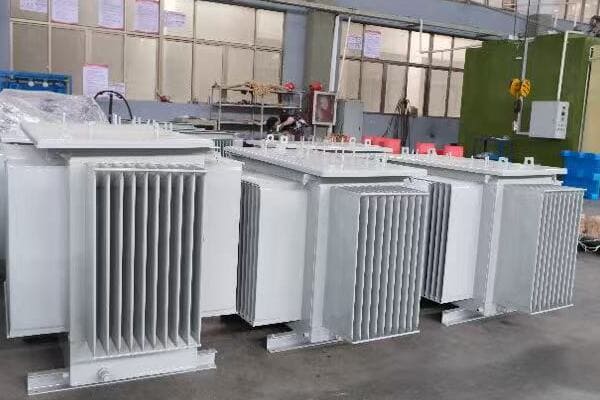
In this article, I'll take you through the cutting-edge ways transformer manufacturers are making their products more environmentally friendly. From new oil types to smart technologies, you'll discover how the industry is evolving to meet today's green standards.
Green Transformers: How Eco-Friendly Oils Are Changing the Power Game?
Have you ever wondered what's inside those big transformers and if it's safe for the environment? The answer is changing, and it's changing fast. Eco-friendly oils are revolutionizing the transformer industry, making power distribution greener than ever before.
Eco-friendly transformer oils are biodegradable, non-toxic alternatives to traditional mineral oils. They offer improved fire safety, better environmental protection, and often enhanced cooling properties. These oils are derived from renewable sources like vegetable oils, synthetic esters, or natural esters, significantly reducing the environmental impact of transformer operations.
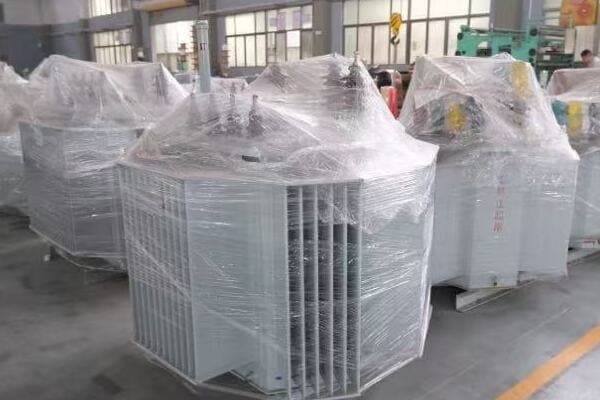
Let's dive into how these green oils are transforming the industry:
Biodegradability: Nature's Way of Cleaning Up
Eco-friendly oils break down naturally, reducing long-term environmental impact.
Key Benefits:
- Rapid decomposition in soil and water
- Reduced soil and groundwater contamination risk
- Lower environmental cleanup costs in case of spills
Fire Safety: A Cooler Approach to Power
These new oils often have higher flash and fire points, enhancing safety.
Safety Advantages:
- Reduced fire hazard in transformer installations
- Lower risk of fire spread in case of equipment failure
- Potential for reduced insurance costs
Performance Enhancements: Not Just Green, But Great
Many eco-friendly oils outperform traditional mineral oils in key areas.
Performance Improvements:
- Better heat dissipation properties
- Extended transformer lifespan
- Improved oxidation stability
Renewable Sources: Powering the Future, Naturally
Eco-oils often come from sustainable, renewable sources.
Source Benefits:
- Reduced dependence on fossil fuels
- Lower carbon footprint in production
- Support for agricultural economies
| Oil Type | Environmental Impact | Performance | Safety Rating |
|---|---|---|---|
| Mineral Oil | High | Standard | Good |
| Vegetable Oil | Low | Excellent | Excellent |
| Synthetic Ester | Low | Very Good | Very Good |
| Natural Ester | Very Low | Good | Excellent |
I remember the first time I encountered an eco-friendly transformer oil in the field. It was during a project to upgrade a substation near a protected wetland area. The local environmental agency had strict regulations, and traditional mineral oil transformers were a no-go.
We decided to use transformers filled with natural ester oil derived from soybean oil. Initially, I was skeptical. How could vegetable oil possibly match the performance of tried-and-true mineral oil? But as we delved into the specifications and test results, I was amazed.
The natural ester oil had a flash point over 300°C, significantly higher than mineral oil. This meant a much lower fire risk, crucial for a site near a sensitive ecosystem. But what really impressed me was its biodegradability. In standardized tests, it broke down almost completely within a month, compared to years for mineral oil.
During installation, we had a minor spill – just a few liters. With mineral oil, this would have been a major environmental incident requiring extensive cleanup. But with the natural ester oil, the cleanup was straightforward. We contained the spill, and within weeks, the oil had largely biodegraded with minimal soil impact.
The performance aspects were equally impressive. The oil's heat dissipation properties were excellent, allowing the transformer to run cooler than its mineral oil counterparts. This not only improved efficiency but also promised to extend the transformer's lifespan.
One unexpected benefit came during a heatwave the following summer. While other substations struggled with overheating issues, our eco-oil transformer maintained optimal operating temperatures. The superior cooling properties of the natural ester oil really shone in these extreme conditions.
Over the next few years, we monitored the transformer closely. The oil showed excellent stability, with less oxidation than we typically see in mineral oils. This meant less frequent oil changes and reduced maintenance overall.
The success of this project led us to recommend eco-friendly oils for many more installations, especially in environmentally sensitive areas. We found that while the initial cost was slightly higher, the long-term benefits in terms of safety, environmental protection, and reduced maintenance often outweighed this.
However, it's important to note that switching to eco-friendly oils isn't always straightforward. In one retrofit project, we had to carefully consider the compatibility of the new oil with existing transformer materials. Some older rubber seals and gaskets weren't suitable for use with natural ester oils and had to be replaced.
Another challenge we faced was educating maintenance teams on the different handling and testing procedures for these new oils. While similar in many ways to mineral oils, eco-friendly oils have unique characteristics that require specific knowledge and sometimes specialized equipment for testing and maintenance.
Despite these challenges, the trend towards eco-friendly transformer oils is clear. As regulations become stricter and environmental concerns grow, these oils offer a way to make power distribution greener without compromising on performance or reliability.
The future of transformer oils is exciting. Researchers are continually developing new formulations, pushing the boundaries of what's possible in terms of biodegradability, fire safety, and performance. Some of the latest oils I've seen in development promise even faster biodegradation rates and improved cold-weather performance, addressing some of the few remaining drawbacks of current eco-friendly options.
As we move towards a more sustainable future, eco-friendly transformer oils are playing a crucial role in making our power infrastructure greener. They're not just a trend; they're becoming the new standard in responsible power distribution.
From Mineral to Vegetable: The Shift Towards Plant-Based Transformer Oils?
Are you still using mineral oil in your transformers? You might be missing out on a green revolution. The power industry is witnessing a significant shift from traditional mineral oils to plant-based alternatives. But why is this change happening, and what does it mean for you?
The shift to plant-based transformer oils is driven by environmental and safety concerns. These vegetable-based oils are biodegradable, have higher flash points, and often offer better cooling properties. They reduce environmental risks, improve fire safety, and can extend transformer life, making them an increasingly popular choice for eco-conscious utilities and industries.
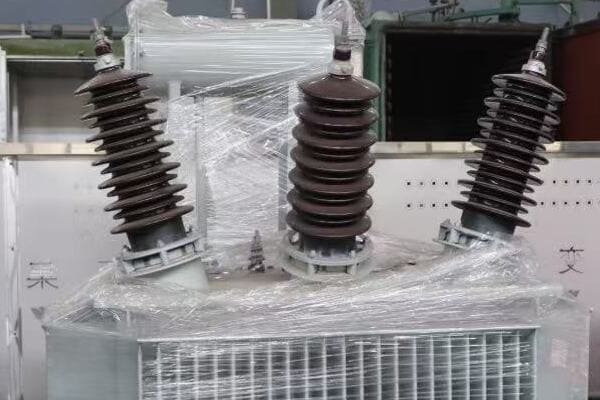
Let's explore the reasons behind this shift and its implications:
Environmental Benefits: A Greener Choice
Plant-based oils offer significant environmental advantages over mineral oils.
Key Environmental Factors:
- Rapid biodegradability
- Lower toxicity to wildlife
- Reduced carbon footprint in production
Safety Improvements: Reducing Fire Risks
Vegetable oils have inherent safety benefits that are hard to ignore.
Safety Enhancements:
- Higher flash and fire points
- Reduced risk of explosion
- Less toxic smoke in case of fire
Performance Advantages: Not Just Green, But Great
Many plant-based oils outperform mineral oils in key areas.
Performance Benefits:
- Better heat dissipation
- Improved moisture tolerance
- Potential for higher overloading capacity
Lifecycle Considerations: Thinking Long-Term
Plant-based oils can positively impact the entire transformer lifecycle.
Lifecycle Advantages:
- Extended transformer lifespan
- Reduced maintenance requirements
- Easier end-of-life disposal
| Aspect | Mineral Oil | Plant-Based Oil |
|---|---|---|
| Biodegradability | Low | High |
| Fire Safety | Good | Excellent |
| Cooling Efficiency | Good | Very Good |
| Lifespan | Standard | Potentially Longer |
| Environmental Impact | High | Low |
I recall a pivotal moment in my career when I first witnessed the real-world impact of switching from mineral to plant-based transformer oil. It was during a project to upgrade a substation located near a nature reserve. The local authorities were concerned about the potential environmental impact of a transformer oil leak.
We proposed using transformers filled with a soybean-based natural ester oil. Initially, there was skepticism from both the client and some of my colleagues. The common perception was that vegetable oils couldn't possibly match the performance of mineral oils that had been the industry standard for decades.
Our first challenge was addressing the fire safety aspect. We conducted a demonstration comparing the flammability of mineral oil to the plant-based alternative. The difference was striking. While the mineral oil ignited easily and burned intensely, the vegetable oil was remarkably resistant to ignition. This visual demonstration was a turning point in convincing stakeholders about the safety benefits.
Next, we focused on the environmental aspects. We presented data showing that in the event of a spill, the plant-based oil would biodegrade almost completely within a month, compared to years for mineral oil. This was crucial given the substation's proximity to sensitive ecosystems.
During the installation process, we noticed another advantage. The plant-based oil had better heat dissipation properties, allowing the transformer to operate at lower temperatures. This not only improved efficiency but also promised to extend the transformer's lifespan.
One unexpected benefit emerged during the first summer after installation. A heatwave hit the region, causing issues with many traditional transformers. Our plant-based oil transformer, however, maintained optimal operating temperatures throughout. This resilience in extreme conditions was a pleasant surprise, even to me.
Over the next few years, we closely monitored the transformer's performance. The oil showed excellent stability, with less oxidation than typically seen in mineral oils. This meant less frequent oil changes and reduced maintenance overall, leading to cost savings for the client.
However, the shift wasn't without challenges. We had to retrain maintenance teams on the proper handling and testing procedures for plant-based oils. While similar in many ways to mineral oils, these new oils have unique characteristics that require specific knowledge.
Another hurdle was the initial cost. Plant-based oils are generally more expensive upfront. We had to make a compelling case for long-term savings through reduced maintenance, longer lifespan, and lower environmental risks.
One particularly interesting aspect was the oil's interaction with transformer components. In a retrofit project, we discovered that some older rubber seals and gaskets weren't compatible with natural ester oils and had to be replaced. This taught us the importance of considering the entire system when making the switch.
The success of this project led to a domino effect. Other utilities in the region began to show interest in plant-based oils. We started receiving inquiries about retrofitting existing transformers, not just new installations.
As we worked on more projects, we refined our approach. We developed a comprehensive assessment tool to help clients evaluate the benefits of switching to plant-based oils, considering factors like environmental risk, fire safety requirements, and long-term maintenance costs.
The shift from mineral to vegetable-based transformer oils is more than just a trend; it's a fundamental change in how we approach power distribution. It represents a move towards more sustainable, safer, and often more efficient practices in the energy sector.
Looking ahead, I'm excited about the ongoing research in this field. New formulations are constantly being developed, promising even better performance, longer lifespans, and improved cold-weather properties. As regulations become stricter and environmental concerns grow, plant-based transformer oils are poised to become the new standard in responsible power distribution.
This shift is a perfect example of how innovation in the power industry can align with environmental goals without compromising on performance or reliability. It's a win-win situation that I'm proud to be a part of, and I'm eager to see how it continues to evolve in the coming years.
Leak-Proof and Earth-Friendly: New Designs Keeping Transformer Oil Where It Belongs?
Are oil leaks from transformers keeping you up at night? You're not alone. Environmental concerns about transformer oil leaks have been a headache for the industry for years. But here's the good news: innovative designs are changing the game.
New transformer designs are addressing oil leak concerns through advanced sealing technologies, robust construction methods, and intelligent monitoring systems. These innovations not only prevent leaks but also improve overall transformer performance and lifespan. The result is a more reliable, environmentally friendly, and cost-effective power distribution system.
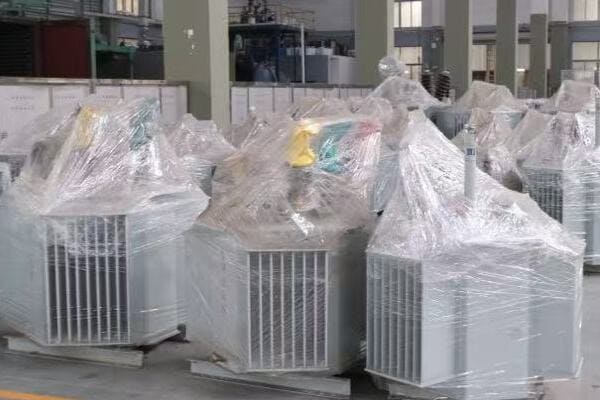
Let's explore these cutting-edge designs keeping transformer oil where it belongs:
Advanced Sealing Technologies: Locking It In
Modern sealing methods are revolutionizing leak prevention in transformers.
Key Sealing Innovations:
- High-performance gasket materials
- Double-seal designs
- Pressure-compensating seals
Robust Construction: Building for Zero Leaks
New construction techniques are making transformers more resilient to leaks.
Construction Advancements:
- Reinforced tank designs
- Welding improvements
- Corrosion-resistant materials
Intelligent Monitoring: Catching Leaks Before They Happen
Smart systems are now able to detect potential leaks early.
Monitoring Features:
- Real-time oil level sensors
- Pressure monitoring systems
- Acoustic leak detection
Design for Maintenance: Easy Access, Less Risk
New designs make maintenance easier and less likely to cause leaks.
Maintenance-Friendly Features:
- Accessible inspection points
- Simplified oil change processes
- Modular components for easy replacement
| Design Aspect | Traditional Transformers | New Leak-Proof Designs |
|---|---|---|
| Sealing | Basic gaskets | Advanced multi-layer seals |
| Construction | Standard welding | Reinforced, precision welding |
| Monitoring | Manual inspections | Real-time digital monitoring |
| Maintenance | Complex procedures | Simplified, accessible design |
I remember a project that really highlighted the importance of leak-proof transformer designs. We were called in to address recurring oil leak issues at a substation located near a sensitive watershed. The environmental stakes were high, and the utility was facing potential fines and public backlash.
Our first step was to conduct a thorough assessment of the existing transformers. We found that the main culprits were aging gaskets and seals, along with some structural weaknesses in the older transformer tanks. It was clear that a complete overhaul was needed.
We proposed replacing the old units with new transformers featuring the latest in leak-proof technology. The centerpiece of this design was a double-seal system using advanced fluoroelastomer materials. These seals were designed to maintain their integrity even under extreme temperature fluctuations and pressure changes.
The transformer tanks themselves were constructed using a new welding technique that created stronger, more uniform seams. We also incorporated a corrosion-resistant coating to protect against environmental factors that could lead to leaks over time.
One of the most exciting aspects of the new design was the intelligent monitoring system. We installed a network of sensors throughout the transformer to monitor oil levels, pressure, and even acoustic signatures that could indicate a developing leak. This system was connected to a central monitoring station, allowing for real-time tracking and early intervention if any issues were detected.
During the installation process, we faced a challenge with the existing foundation. The new transformers, while more compact, required a different mounting configuration to ensure stability and minimize stress on the seals. We worked with structural engineers to modify the foundations, incorporating vibration dampening elements to further reduce the risk of leaks.
The results were impressive. In the first year after installation, there were zero reported leaks. The utility's maintenance team was particularly pleased with the new design's accessibility features. Simple tasks like oil sampling, which previously required partial disassembly and carried a risk of introducing leaks, could now be performed quickly and safely through dedicated access ports.
An unexpected benefit came during a severe storm that hit the area. The substation was partially flooded, but the new transformers' enhanced sealing kept all the oil contained. This incident really demonstrated the robustness of the new design under extreme conditions.
One interesting aspect we discovered was the impact of these leak-proof designs on transformer efficiency. The more stable internal environment, free from moisture ingress and with better thermal management, actually improved the overall performance of the transformers. We saw a slight but noticeable increase in efficiency, which translated to energy savings for the utility.
The success of this project led to a broader initiative. The utility began a phased replacement program for all their older transformers, prioritizing units in environmentally sensitive areas. They also implemented a new maintenance protocol based on the real-time data provided by the monitoring systems.
However, implementing these new designs wasn't without challenges. The initial cost was higher than traditional transformers, and we had to make a strong case for the long-term savings in maintenance, reduced environmental risks, and improved reliability. We developed a comprehensive cost-benefit analysis tool to help utilities understand the full lifecycle advantages of these leak-proof designs.
Training was another crucial aspect. The maintenance teams needed to be brought up to speed on the new technologies, especially the digital monitoring systems. We organized workshops and created detailed manuals to ensure they could fully leverage these new features.
Looking ahead, I'm excited about the future of leak-proof transformer designs. Researchers are working on even more advanced materials, like self-healing polymLooking ahead, I'm excited about the future of leak-proof transformer designs. Researchers are working on even more advanced materials, like self-healing polymers that can automatically seal small cracks or punctures. There's also promising work being done on nanotechnology-based coatings that could provide even better protection against corrosion and leaks.
The trend towards leak-proof designs is not just about environmental protection; it's about creating more reliable, efficient, and sustainable power distribution systems. As regulations become stricter and public awareness of environmental issues grows, these innovations will likely become the new standard in transformer design.
For utilities and industries relying on oil-filled transformers, investing in these new leak-proof designs is not just a matter of compliance or risk management. It's an opportunity to improve operational efficiency, reduce long-term costs, and demonstrate a commitment to environmental stewardship.
As we continue to push the boundaries of what's possible in transformer design, I believe we're moving towards a future where oil leaks from transformers will be a thing of the past. This is a future I'm excited to be a part of, and one that will benefit both the industry and the environment for generations to come.
Recycling Power: Giving Old Transformer Oil a New Life?
Are you wondering what happens to all that used transformer oil? It's a question that's becoming increasingly important as we focus on sustainability. The good news is that recycling transformer oil is not only possible but is becoming a crucial part of the industry's environmental strategy.
Recycling transformer oil involves purifying and reconditioning used oil to restore its insulating properties. This process reduces waste, conserves resources, and lowers the environmental impact of transformer operations. Advanced recycling techniques can now produce reconditioned oil that meets or exceeds the quality of new oil, making it a viable and eco-friendly option.

Let's explore how the industry is giving old transformer oil a new lease on life:
Purification Process: Cleaning Up the Past
Modern oil recycling techniques can remove contaminants and restore oil quality.
Key Purification Steps:
- Filtration to remove particles
- Dehydration to eliminate moisture
- Degasification to remove dissolved gases
Quality Restoration: As Good as New
Advanced treatments can bring recycled oil back to its original specifications.
Restoration Techniques:
- Chemical rebalancing
- Additive replenishment
- Oxidation stability improvement
Environmental Benefits: Reducing the Footprint
Oil recycling significantly reduces the environmental impact of transformer maintenance.
Environmental Advantages:
- Reduced need for new oil production
- Minimized waste disposal
- Lower carbon footprint
Economic Considerations: Saving Green by Going Green
Recycling transformer oil can offer significant cost savings.
Economic Benefits:
- Lower oil replacement costs
- Reduced waste disposal expenses
- Potential for extended transformer life
| Aspect | New Oil | Recycled Oil |
|---|---|---|
| Quality | High | Comparable to new |
| Environmental Impact | Higher | Lower |
| Cost | Higher | Lower |
| Availability | Subject to market | More stable supply |
I remember a project that really opened my eyes to the potential of transformer oil recycling. We were working with a large utility company that was facing increasing costs and environmental concerns related to their transformer oil management.
The company had been following the traditional approach of periodically replacing old oil with new oil, disposing of the used oil as hazardous waste. This was not only expensive but also raised environmental concerns. We proposed implementing a comprehensive oil recycling program.
Our first step was to set up an on-site oil recycling facility. This involved installing state-of-the-art purification equipment capable of handling large volumes of oil. The heart of the system was a multi-stage filtration process that could remove particles down to the sub-micron level.
One of the challenges we faced was dealing with oil from older transformers that contained PCBs (polychlorinated biphenyls). We had to implement a specialized treatment process to safely remove and dispose of these harmful compounds before recycling the oil.
The results of the recycling process were impressive. Laboratory tests showed that the reconditioned oil met or exceeded the specifications for new oil in terms of dielectric strength, acidity, and moisture content. In some cases, the recycled oil actually performed better than new oil due to the advanced additives we used in the reconditioning process.
We implemented a rigorous quality control system to ensure consistency in the recycled oil. Each batch was tested thoroughly before being approved for use. This attention to quality was crucial in building confidence among the maintenance teams who were initially skeptical about using recycled oil.
The economic benefits became clear very quickly. The utility saw a 60% reduction in their oil replacement costs within the first year. Additionally, they significantly reduced their hazardous waste disposal expenses, as only a small fraction of the oil was now being discarded.
An unexpected benefit emerged in terms of transformer performance. Transformers filled with the high-quality recycled oil showed improved cooling efficiency and reduced oxidation rates. This led to extended maintenance intervals and potentially longer transformer lifespans.
The environmental impact was substantial. By recycling oil instead of disposing of it, the utility drastically reduced its carbon footprint associated with oil production and transport. They also minimized the risk of soil and water contamination from oil disposal.
One interesting aspect of the project was the development of a closed-loop system for oil management. We set up a schedule where oil from each transformer was periodically recycled, with minimal new oil being introduced into the system. This approach not only maximized the use of existing resources but also provided better traceability and quality control.
The success of this project led to a ripple effect in the industry. Other utilities began to take notice and implement similar recycling programs. We even saw the emergence of specialized oil recycling services catering to smaller utilities that couldn't justify an on-site recycling facility.
However, implementing an oil recycling program wasn't without challenges. We had to invest time in training maintenance teams on new procedures for oil handling and testing. There was also an initial reluctance from some engineers who were more comfortable with using new oil. Overcoming these cultural barriers required ongoing education and demonstration of the recycled oil's quality.
Looking to the future, I'm excited about the potential advancements in oil recycling technology. Researchers are working on even more efficient purification methods, including the use of bio-based additives that could further enhance the properties of recycled oil.
The trend towards oil recycling is more than just a cost-saving measure; it's a fundamental shift in how we approach resource management in the power industry. As we move towards a more circular economy, practices like oil recycling will become increasingly important in ensuring the sustainability of our power infrastructure.
For utilities and industries relying on oil-filled transformers, investing in oil recycling is an opportunity to reduce costs, improve environmental performance, and contribute to a more sustainable future. It's a win-win situation that aligns economic interests with environmental responsibility.
As we continue to innovate in this field, I believe we'll see even more creative solutions for extending the life of transformer oil and minimizing waste. This is an exciting area of development that has the potential to significantly reduce the environmental impact of power distribution systems worldwide.
Smart and Clean: How Modern Technology is Making Oil Filled Transformers Greener?
Are you concerned about the environmental impact of your oil-filled transformers? You're not alone. But here's some good news: modern technology is revolutionizing the way we manage and operate these crucial components of our power grid, making them cleaner and more efficient than ever before.
Modern technology is enhancing the environmental performance of oil-filled transformers through smart monitoring systems, advanced diagnostics, and improved maintenance techniques. These innovations allow for early detection of issues, optimize performance, and extend transformer lifespan, ultimately reducing environmental impact and improving overall efficiency.
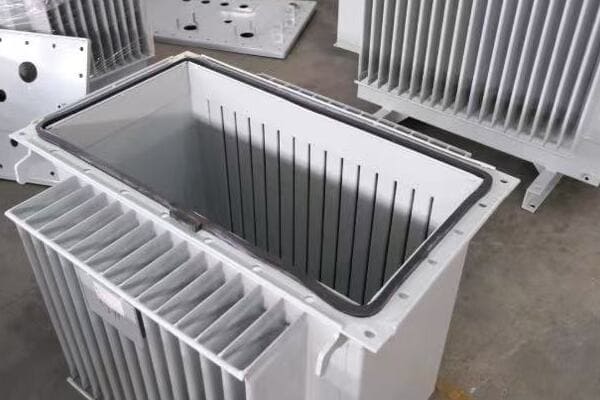
Let's explore how cutting-edge technology is making oil-filled transformers greener:
Real-Time Monitoring: Catching Issues Before They Become Problems
Smart sensors and IoT technology are transforming transformer maintenance.
Key Monitoring Features:
- Continuous oil quality assessment
- Temperature and pressure tracking
- Load and efficiency monitoring
Predictive Maintenance: Staying Ahead of the Curve
Advanced analytics help predict and prevent potential failures.
Predictive Capabilities:
- AI-driven fault prediction
- Lifespan estimation models
- Optimized maintenance scheduling
Efficiency Optimization: Doing More with Less
Smart systems can adjust transformer operation for maximum efficiency.
Optimization Techniques:
- Dynamic load management
- Cooling system optimization
- Voltage regulation fine-tuning
Environmental Safeguards: Protecting Nature in Real-Time
Technology provides enhanced protection against environmental risks.
Environmental Features:
- Automated leak detection and response
- Biodegradable oil level monitoring
- Integration with spill containment systems
| Aspect | Traditional Approach | Smart Technology Approach |
|---|---|---|
| Monitoring | Periodic manual checks | Continuous real-time monitoring |
| Maintenance | Scheduled, often unnecessary | Predictive, as-needed |
| Efficiency | Static operation | Dynamic optimization |
| Environmental Protection | Reactive | Proactive and preventive |
I recall a project that really showcased the power of smart technology in making oil-filled transformers greener. We were working with a utility company that operated a large network of transformers in an environmentally sensitive area. They were facing increasing pressure to improve their environmental performance while maintaining reliable power supply.
Our solution was to implement a comprehensive smart monitoring and management system across their transformer network. The heart of this system was a network of advanced sensors installed on each transformer. These sensors continuously monitored various parameters including oil quality, temperature, pressure, and electrical characteristics.
One of the most impressive features of this system was its ability to detect potential oil leaks before they became significant. We installed acoustic sensors that could detect the smallest changes in sound patterns within the transformer, often indicative of developing leaks. This early warning system allowed for immediate intervention, preventing environmental contamination.
The predictive maintenance capabilities of the system were truly game-changing. By analyzing data trends, the AI-driven software could predict potential failures weeks or even months in advance. This allowed the utility to schedule maintenance during off-peak times, reducing downtime and extending the overall lifespan of the transformers.
We faced an interesting challenge when integrating this new technology with the existing infrastructure. Many of the transformers were decades old and not designed for smart monitoring. We had to develop custom retrofitting solutions that could add these capabilities without compromising the integrity of the transformers.
The efficiency optimization features of the system proved to be a major benefit. The smart system could dynamically adjust transformer operation based on load demands and environmental conditions. For example, during periods of low demand, it could optimize voltage levels to reduce losses. During hot weather, it could proactively manage cooling systems to prevent overheating without wasting energy.
One particularly innovative aspect was the integration of weather data into the management system. By considering factors like ambient temperature and humidity, the system could more accurately predict transformer performance and adjust operations accordingly. This not only improved efficiency but also extended the life of the transformer oil by reducing thermal stress.
The environmental safeguards built into the system were impressive. In addition to leak detection, we implemented real-time monitoring of oil levels and quality. If any anomalies were detected, the system could automatically initiate containment procedures and alert maintenance teams. This rapid response capability significantly reduced the risk of environmental contamination.
The results of this project were remarkable. Within the first year of implementation, the utility saw a 30% reduction in oil-related incidents. Energy efficiency improved by about 5% across the network, which translated to significant cost savings and reduced carbon emissions. The predictive maintenance capabilities extended the average lifespan of transformers by an estimated 15-20%.
An unexpected benefit emerged in terms of workforce management. The smart system allowed for more efficient allocation of maintenance resources. Instead of routine check-ups, technicians could focus on transformers that actually needed attention, improving overall productivity.
However, implementing this technology wasn't without challenges. We had to invest considerable time in training staff to use the new systems effectively. There was also initial skepticism from some veteran technicians who were more comfortable with traditional maintenance methods. Overcoming this required a comprehensive training program and gradual phase-in of the new technology.
Data security was another crucial aspect we had to address. With transformers now connected to a network, ensuring the security of this critical infrastructure against cyber threats became paramount. We implemented robust cybersecurity measures, including encryption and multi-factor authentication, to protect the system.
Looking to the future, I'm excited about the potential for even more advanced technologies in this field. Developments in machine learning and AI promise to make predictive maintenance even more accurate. There's also promising research into self-healing materials that could automatically repair small defects in transformer components.
The integration of renewable energy sources presents both challenges and opportunities for smart transformer technology. As the grid becomes more complex with distributed generation, smart transformers will play a crucial role in managing bidirectional power flows and maintaining grid stability.
For utilities and industries operating oil-filled transformers, investing in smart technology is not just about compliance or efficiency. It's about future-proofing their infrastructure and demonstrating a commitment to environmental responsibility. As regulations become stricter and public awareness of environmental issues grows, these smart, green transformers will likely become the new standard in the industry.
The journey towards greener oil-filled transformers is an ongoing process of innovation and improvement. By leveraging smart technology, we're not just making these critical components of our power infrastructure more environmentally friendly; we're making them more reliable, efficient, and sustainable for the long term.
Conclusion
Oil filled transformer manufacturers are actively addressing environmental concerns through eco-friendly oils, leak-proof designs, recycling programs, and smart technologies. These innovations are making transformers more efficient, environmentally friendly, and sustainable, paving the way for a greener future in power distribution.


